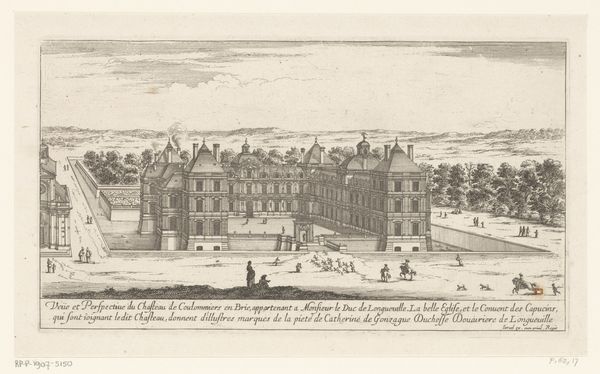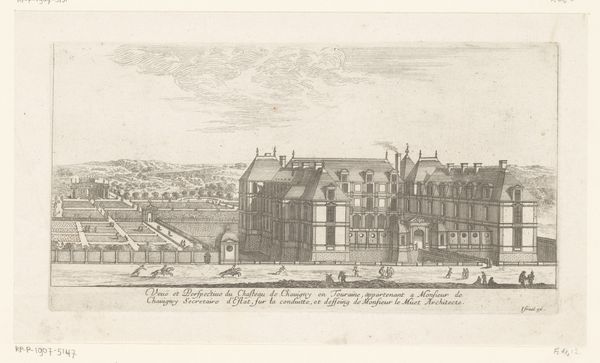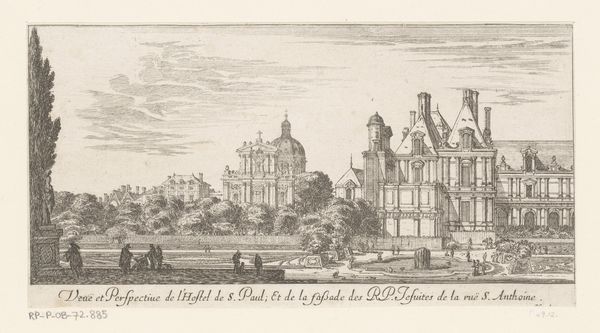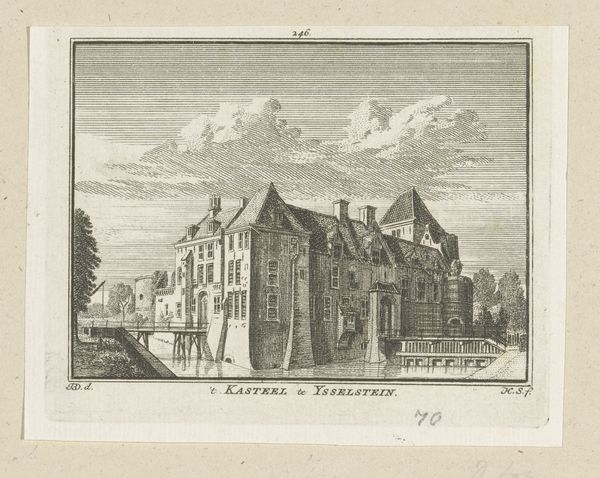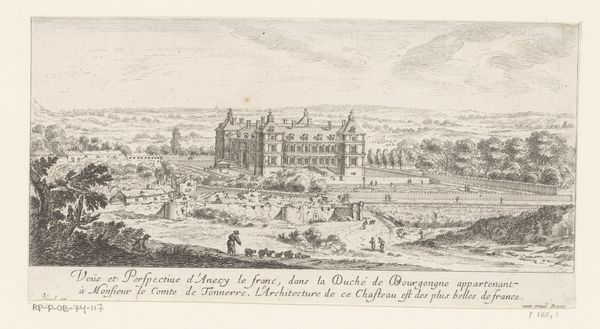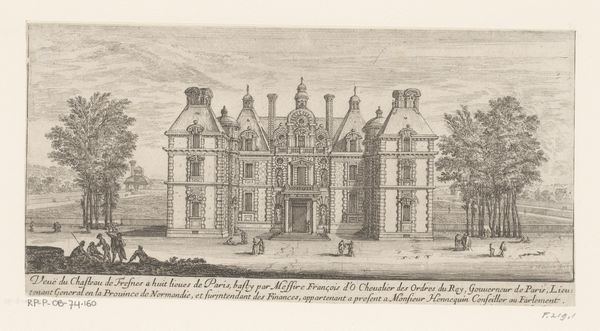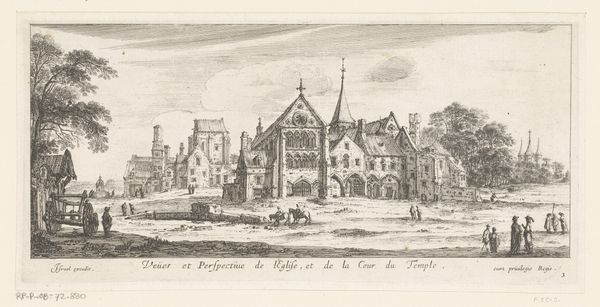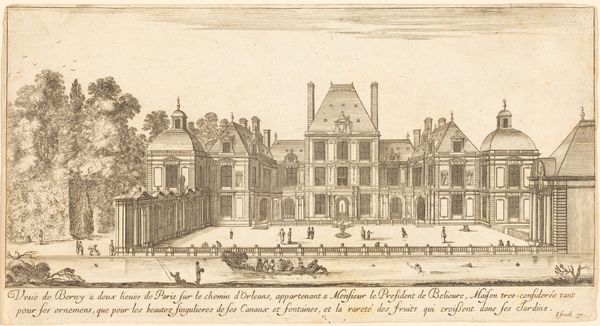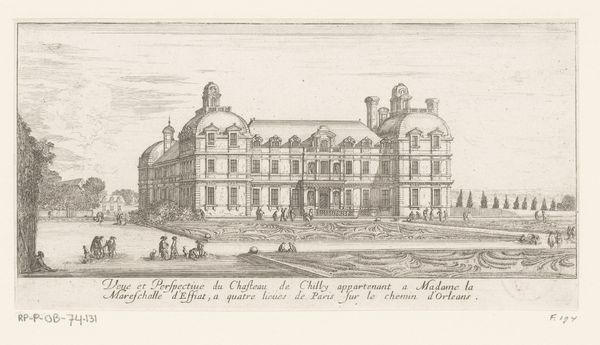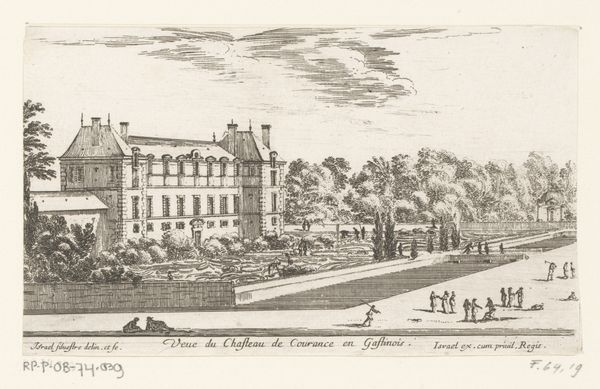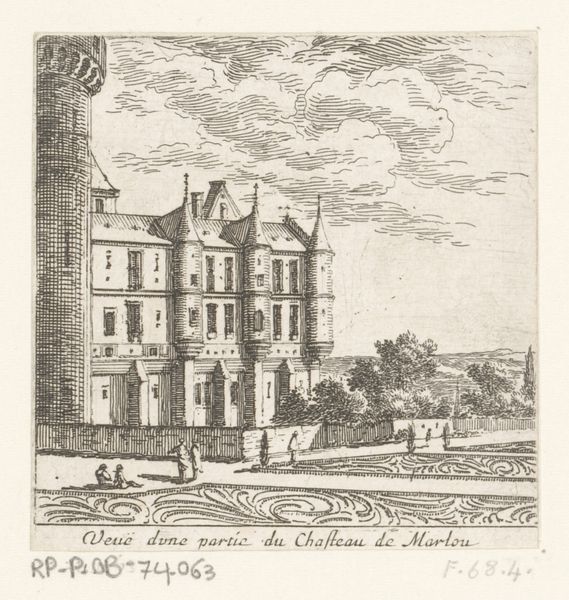
engraving, architecture
#
baroque
#
old engraving style
#
cityscape
#
engraving
#
architecture
Dimensions: height 131 mm, width 243 mm
Copyright: Rijks Museum: Open Domain
This print, made by Jean Marot in the 17th century, depicts the Chateau de Madrid in France. It was made using engraving, a printmaking process that involves cutting lines into a metal plate, inking the plate, and then pressing it onto paper. Consider the labor involved in creating this image: the skilled hand of the engraver meticulously cutting lines to represent the architecture, the landscape, and even the figures in the foreground. This was a time before photography, when printed images like this played a crucial role in disseminating information and shaping perceptions of places. The choice of engraving as a medium also reflects the social and cultural significance of the image. Printmaking allowed for the mass production of images, making them accessible to a wider audience beyond the wealthy elite who could afford original paintings. Ultimately, this print reminds us that even seemingly simple images are the result of skilled labor, technical processes, and social contexts. Understanding these factors is essential to fully appreciating the work.
Comments
No comments
Be the first to comment and join the conversation on the ultimate creative platform.
